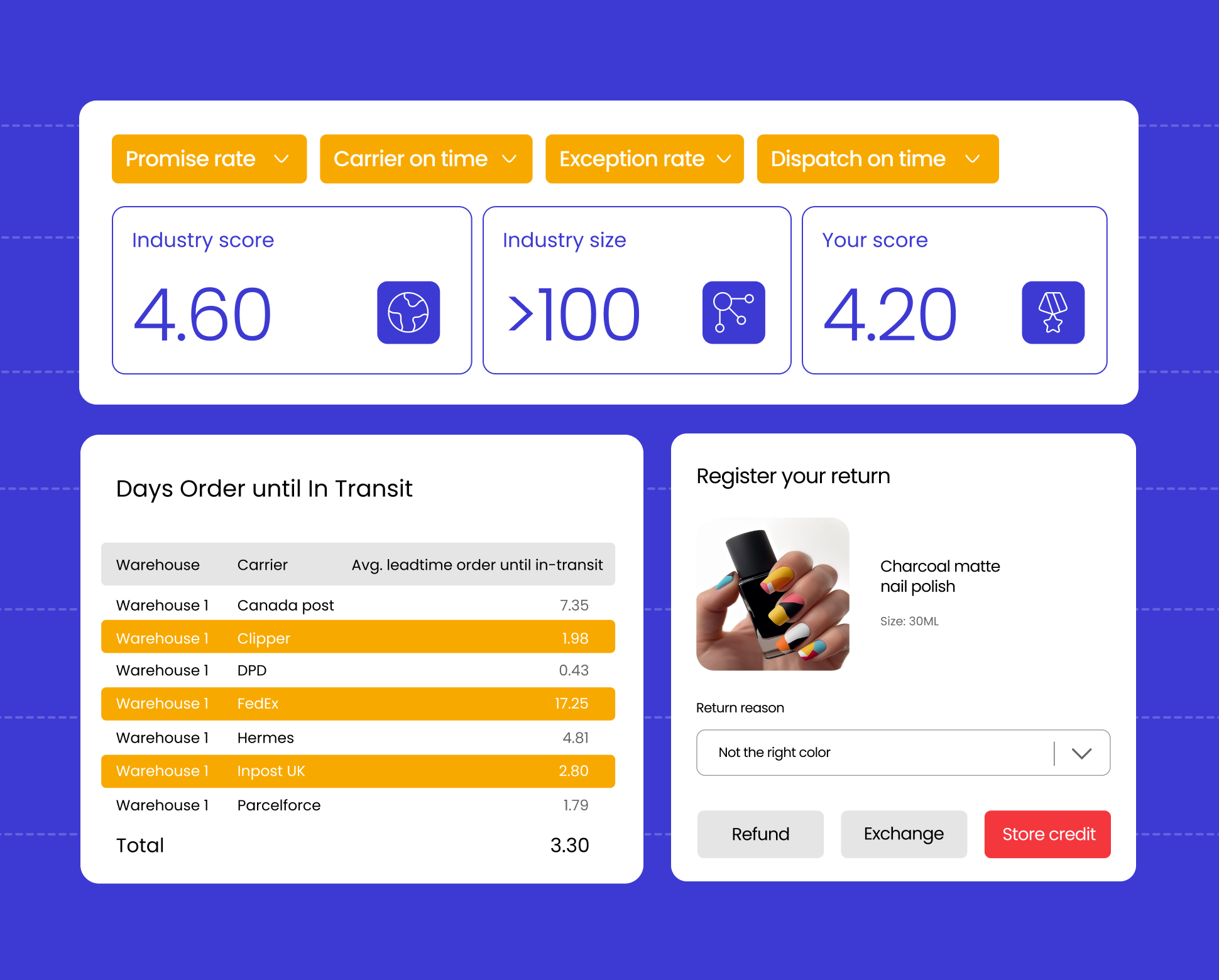4 ways to ace your post-purchase experience this peak season

The holiday season is fast approaching, and with it comes the annual surge in online shopping. Last year, US e-commerce sales during the holiday season reached a record-breaking $222.1 billion, according to Adobe Analytics. This year is expected to be just as busy, if not busier!
Are you prepared to handle the influx of orders and keep your customers happy during this critical time? The post-purchase experience is an extremely important part of the customer journey, and a well-oiled system can mean the difference between a loyal customer and a lost sale.
Why focus on the post-purchase experience during peak season?
While getting customers into the door is heavily focused on, the post-purchase experience is the place you can really make a difference in the customer experience. Here are just a few reasons why prioritizing your post-purchase experience is crucial for peak season success:
- Increased competition: With more retailers competing for attention, an exceptional post-purchase journey becomes a key differentiator for customer retention.
- Heightened customer expectations: Holiday shoppers expect a smooth and efficient buying journey, from order confirmation to delivery. When you put the time into making your customers’ post-purchase experience feel special, it keeps customers coming back. This can be from sharing personalized recommendations, providing how-to videos, promoting loyalty programs, and more. Customers are more engaged than ever during this process. Use it to your advantage.
- Potential for delays: Increased shipping volume can lead to delays. Proactive communication is essential to manage expectations and maintain customer satisfaction.
Four tips for a successful peak season
1. Plan ahead
Start preparing your post-purchase strategy well in advance of a peak season rush. The best place to begin would be to look at last year’s peak season data to identify areas for improvement. This can include things like inventory management, staffing, common customer inquiries, peak times for order tracking, and return rates.
If you don’t have one already, it is important to have a communication plan in place to keep customers informed throughout the post-purchase journey. It is key that the post-purchase emails come directly from you rather than a carrier. When updates come from carriers, the emails can go to spam, or your customers could possibly not be updated at all, leading to costly WISMO inquiries. Also, you are missing out on driving traffic to your website by leaving communications in the hands of carriers. Furthermore, the communication plan should go beyond the typical three emails you may send (order confirmation, order just shipped, and order delivered). There should also be emails prepared for split shipments, different types of delays, and when an order is out for delivery.

Lastly, invest in automation where you can. During these periods, time is of the essence. A customer-friendly self-service portal for returns can ease the burden on customer service teams and can be a great way to collect data on why customers are making returns, reduce return fraud, and recover revenue by offering different exchange and refund options.
2. Test and refine
Before peak season arrives, ensure your systems and processes are working smoothly. To identify and fix potential glitches ahead of busy times, run internal tests of your post-purchase communication flows, tracking portal, and returns processes.
If you are implementing any new post-purchase software, features, or integrations, consider a soft launch with a limited group of customers before rolling it out to everyone.
3. Be transparent
To boost customer satisfaction and loyalty, communicate openly with your customers about potential delays and shipping timelines. More specifically, take a look at your delivery promise date. This should give an accurate representation of when you can deliver a customer’s order when you have an influx of business during this time. Solutions like parcelLab Promise allow retailers to provide an aggressive, moderate, or conservative delivery date that can be flexibly adjusted to account for any delays and combines parcelLab’s global dataset with your own historical fulfillment data to provide the best-in-class promise date.
If you anticipate delays, proactively notify customers about the expected timeframe and the reason for the delay. Offer apologies and suggest alternative solutions or discounts on future orders, if possible.
4. Prioritize customer service
Be prepared to handle an increased volume of customer inquiries. Based on previous years and what your team forecasts for this year, schedule your customer service team accordingly and consider hiring temporary staff or offering extended hours. One way to minimize an influx of customer service inquiries is to have frequently asked questions and return policies readily available for shoppers and agents. Additionally, it is important to make it easy for customers to reach you by offering various communication channels such as email, phone, and live chat so customers can reach you in their preferred method.
To go one step further, proactive communication and self-service portals for order tracking and returns registration can help deflect a significant number of inquiries. This allows agents to focus on resolving more complex issues and other revenue-generating activities.
How parcelLab can help you level up this peak season
parcelLab offers a suite of solutions designed to empower retailers to deliver a seamless post-purchase experience, such as:
- Automated post-purchase communication: Keep customers informed with automated emails and SMS notifications about order confirmation, shipment tracking, and delivery updates.
- Embedded order tracking: Empower your customers to track their orders in real time using a tracking page that is embedded on your website, reducing the burden on your customer service team and driving valuable traffic back to your website to reconvert.
- Personalized recommendations: Boost sales and customer satisfaction by suggesting relevant products on the order status page and in communications based on each customer’s purchase history.
- Streamlined returns process: Make returns and exchanges quick and easy with a self-service returns portal, reducing customer frustration and encouraging repeat business.

Don’t let peak season overwhelm you!
By following these tips and reflecting on the previous year, you’ll be sure to come out on top this year. If you’re interested in learning more about how parcelLab can take your post-purchase experience to the next level for ultimate peak season benefits, reach out to parcelLab today!



